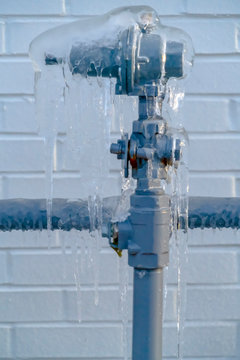Ways to Safeguard Plumbing System from Cold Weather: Critical Strategies
Ways to Safeguard Plumbing System from Cold Weather: Critical Strategies
Blog Article
Do you find yourself interested in additional info on 6 Ways to Prevent Frozen Pipes?

Winter can damage your pipes, especially by freezing pipes. Here's how to avoid it from taking place and what to do if it does.
Introduction
As temperatures decrease, the risk of frozen pipes increases, potentially resulting in expensive repair services and water damages. Understanding exactly how to stop frozen pipes is vital for property owners in chilly environments.
Prevention Tips
Insulating at risk pipes
Cover pipes in insulation sleeves or utilize warm tape to shield them from freezing temperature levels. Concentrate on pipes in unheated or external locations of the home.
Home heating strategies
Keep indoor spaces adequately heated, especially locations with pipes. Open up closet doors to allow warm air to circulate around pipes under sinks.
How to recognize icy pipes
Seek lowered water circulation from faucets, unusual smells or noises from pipes, and visible frost on exposed pipelines.
Long-Term Solutions
Architectural adjustments
Take into consideration rerouting pipes away from outside walls or unheated locations. Add added insulation to attic rooms, basements, and crawl spaces.
Updating insulation
Purchase top notch insulation for pipelines, attics, and walls. Proper insulation assists maintain constant temperature levels and reduces the danger of icy pipelines.
Securing Outdoor Pipes
Garden hose pipes and exterior faucets
Separate and drain garden tubes before winter months. Install frost-proof spigots or cover outdoor faucets with insulated caps.
Understanding Frozen Pipelines
What triggers pipelines to ice up?
Pipelines ice up when revealed to temperature levels below 32 ° F (0 ° C) for extended periods. As water inside the pipelines freezes, it expands, putting pressure on the pipeline walls and potentially causing them to break.
Risks and damages
Icy pipes can result in water system interruptions, building damage, and expensive fixings. Ruptured pipes can flooding homes and trigger extensive architectural damages.
Indicators of Frozen Pipeline
Identifying frozen pipelines early can prevent them from breaking.
What to Do If Your Pipes Freeze
Immediate actions to take
If you presume frozen pipes, maintain faucets available to soothe pressure as the ice thaws. Make use of a hairdryer or towels soaked in warm water to thaw pipes slowly.
Conclusion
Protecting against icy pipelines requires aggressive procedures and quick reactions. By understanding the reasons, indications, and preventive measures, house owners can secure their plumbing throughout cold weather.
5 Ways to Prevent Frozen Pipes
Drain Outdoor Faucets and Disconnect Hoses
First, close the shut-off valve that controls the flow of water in the pipe to your outdoor faucet. Then, head outside to disconnect and drain your hose and open the outdoor faucet to allow the water to completely drain out of the line. Turn off the faucet when done. Finally, head back to the shut-off valve and drain the remaining water inside the pipe into a bucket or container. Additionally, if you have a home irrigation system, you should consider hiring an expert to clear the system of water each year.
Insulate Pipes
One of the best and most cost-effective methods for preventing frozen water pipes is to wrap your pipes with insulation. This is especially important for areas in your home that aren’t exposed to heat, such as an attic. We suggest using foam sleeves, which can typically be found at your local hardware store.
Keep Heat Running at 65
Your pipes are located inside your walls, and the temperature there is much colder than the rest of the house. To prevent your pipes from freezing, The Insurance Information Institute suggests that you keep your home heated to at least 65 degrees, even when traveling. You may want to invest in smart devices that can keep an eye on the temperature in your home while you’re away.
Leave Water Dripping
Moving water — even a small trickle — can prevent ice from forming inside your pipes. When freezing temps are imminent, start a drip of water from all faucets that serve exposed pipes. Leaving a few faucets running will also help relieve pressure inside the pipes and help prevent a rupture if the water inside freezes.
Open Cupboard Doors
Warm your kitchen and bathroom pipes by opening cupboards and vanities. You should also leave your interior doors ajar to help warm air circulate evenly throughout your home.

I came across that blog post about 6 Ways to Prevent Frozen Pipes when doing a search on the web. Sharing is good. Helping people is fun. Thank you so much for taking the time to read it.
Call Today Report this page